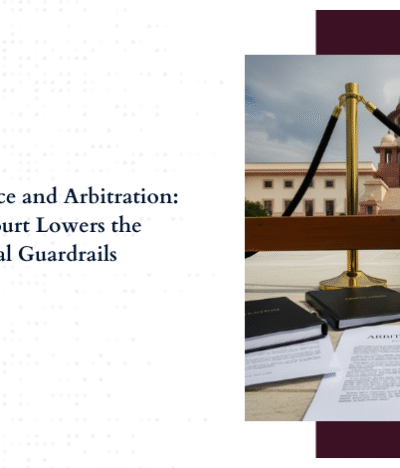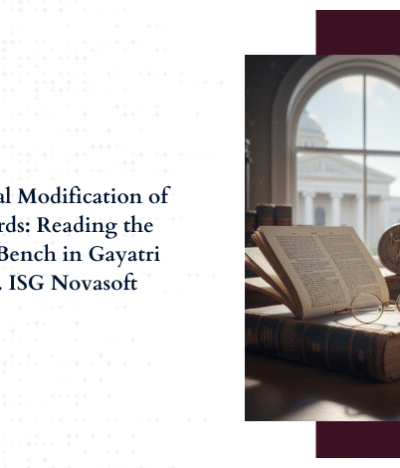Are you aware of how to transfer property from husband to wife in India? In India, the procedure to transfer property from a husband to his wife is a legal process governed by various applicable legal frameworks, including provisions under the Indian Succession Act and the Hindu Succession Act. Whether through gift deeds, sale deeds, wills or intestate succession, such transfers carry significant implications for both parties involved.
Understanding how to transfer property from husband to wife is crucial for ensuring a seamless and legally valid property transfer from husband to wife. Let’s delve into the intricacies of how to transfer property from husband to wife and the legal considerations involved, ensuring compliance with all legal requirements and protecting the interests of both spouses throughout the process.
How of Transfer of Property from Husband to Wife in India
In India, the transfer of property from a husband to his wife encompasses a range of legal mechanisms and procedures, each with its own intricacies and implications. Whether facilitated through deeds, wills or intestate succession, this process involves navigating a complex legal framework to ensure compliance with Indian laws and regulations.
1. Transferring Through a Gift Deed
A gift deed is a document used to transfer property from one person to another without any exchange of money. Here’s how the process typically works:
1.1. Draft the Gift Deed
The husband (donor) would need to draft a gift deed, which should include details such as the description of the property being transferred, the names of the donor and the donee (wife), and any conditions or restrictions associated with the gift. The gift deed must be signed by the donor in the presence of at least two witnesses.
1.2. Acceptance by the Wife
The wife (donee) must accept the gift voluntarily.
1.3. Stamp Duty
The stamp duty for registering a gift deed varies across different states in India. When transferring property from husband to wife, certain states offer concessions for stamp duty for transfer in blood relations.
In Delhi, the rate is 4% of the circle rate if the donee is a woman, 6% if the donee is a man, and 5% if the property is jointly held.
1.4. Registration
In many jurisdictions, gift deeds for immovable property (such as land or buildings) must be registered with the sub-registrar’s office to be legally valid.
1.5. Documents Required
- Drafted Gift Deed
- Identity Proofs
- Original Property Documents
- Encumbrance Certificate
- No Objection Certificate (if applicable)
- Proof of Payment of Stamp Duty
2. Transferring Through Sale Deed
2.1. Sale Agreement
In a sale deed, both the husband and wife come to a mutual agreement regarding the terms of the sale, which should encompass aspects such as the sale price and any additional conditions. This agreement must outline the property’s specifics and the considerations involved in the transaction.
2.2. Drafting the Sale Deed
The sale deed is a legally binding document that facilitates the transfer of ownership from the seller (husband) to the buyer (wife). It must contain the following details:
- Identification particulars of both parties, i.e., husband and wife.
- Description of the property.
- Agreed sale price.
- Method of payment.
- Transfer of all rights, titles, and interests.
- Date of possession transfer.
2.3. Execution of the Sale Deed
Both the husband and wife are required to sign the sale deed in the presence of at least two witnesses at the relevant sub-registrar’s office.
2.4. Payment of Stamp Duty and Registration Fees
Typically, it is the responsibility of the buyer (wife) to cover the expenses related to stamp duty and registration fees. The exact amounts vary based on factors such as the property’s location and value and are settled at the local sub-registrar’s office.
2.5. Registration of the Sale Deed
To formalize the sale deed, it must be registered with the local sub-registrar. The presence of both parties, along with the witnesses, is mandatory, along with the submission of the following documents:
- Duly signed sale deed.
- Valid identification proofs (e.g., Aadhaar card, PAN card).
- Passport-sized photographs.
- Evidence of stamp duty and registration fee payment.
- Previous property title documents.
- Encumbrance certificate.
2.6. Mutation of Property
After the sale deed is registered, the wife should apply for the mutation of the property in the local municipal records to update the ownership details.
3. Transferring Through Succession
3.1. Intestate Succession (No Will)
Intestate succession in India, which occurs when someone dies without leaving a will or testament, follows a set of rules outlined in the Indian Succession Act, 1925. When a husband passes away without a will, and assuming there are no other legal heirs, the wife typically inherits his property.
3.1.1. Determination of Legal Heirs
The first step is to determine the legal heirs of the deceased husband. In the absence of a will, the Indian Succession Act specifies a hierarchy of heirs, with the spouse being the first in line, followed by children, parents and so on.
3.1.2. Application for Succession/ Legal heir certificate
The wife, as the legal heir, can apply for a succession/legal heir certificate from the appropriate court. This certificate is granted by the court to establish the authenticity of the legal heirs and their entitlement to the deceased’s property. Upon satisfactory verification, the authority issues a legal heir or succession certificate.
3.1.3. Partition of Property
The applicable laws determine the shares of each legal heir, based on factors such as their relationship to the deceased and any existing statutory provisions.
Under the Hindu Succession Act of 1956, property division follows intestate succession rules. Class I heirs (spouse, children, and parents) have primary rights, inheriting equally in the absence of a will. Class II heirs (father, siblings, grandparents) follow if no Class I heirs exist. In the absence of both, the property devolves to agnates or cognates. This ensures fair asset distribution among legal heirs.
3.1.4. Mutation of Property Titles
The legal heirs must initiate the mutation process to transfer property titles to their names. This involves submitting the legal heir certificate and other relevant documents to the local municipal authority.
3.1.5. Transfer of Possession and Ownership
Once the mutation process is complete, the legal heirs, including the wife, become the rightful owners of their respective shares of the deceased husband’s property.
3.2. Testamentary Succession (Will)
A will, also known as a testament, is a document that allows an individual to specify how their property should be distributed after their death. Here’s how the process works:
3.2.1. The Will
The husband would need to draft a will, the will should clearly outline how the property should be distributed and details of beneficiaries. The will must be signed by the husband in the presence of at least two witnesses who are not beneficiaries named in the will.
3.2.2. Declaration of title suit
The wife must file a suit for declaration in the appropriate civil court. She needs to submit the will, evidence of her husband’s death, and proof of the will’s authenticity, as evidence. The court will examine the validity of the will and the husband’s clear title to the property. If the court is satisfied that the will is genuine and legally executed, it will declare the wife as the rightful owner of the property as per the will’s terms.
3.2.3. Probate Process (If Required)
After the husband’s death, the will can go through the probate process, which also varies from state to state, during which the court determines the validity of the will and oversees the distribution of the estate according to its terms.
3.2.4. Mutation of Property
To update the property records, the wife should submit an application for mutation to the local municipal or revenue office.
3.2.5. Required Documents
- Drafted Will
- Death Certificate
- Identity Proofs
- Witnesses’ Identity Proofs
- Executor’s Identity Proof
- Property Documents
- Legal Heir Certificate
- Succession Certificate (if applicable)
- Any Other Relevant Documents
Common Challenges of Transferring Property Husband to Wife
Transferring property from a husband to a wife can include several challenges such as:
Legal Formalities
This challenge may arise due to errors or omissions in drafting deeds, such as drafting and executing deeds, obtaining signatures from witnesses and registering documents with government authorities. Drafting deeds requires meticulous attention to detail to accurately describe the property being transferred and the rights associated with it. Any inaccuracies or ambiguities in the deed can raise questions about the validity of the transfer. Failure to adhere to these requirements can render the transfer invalid.
Title disputes
Title disputes can arise when there are conflicting claims to ownership or rights over the property. These disputes may involve issues such as unclear property boundaries, competing inheritance claims or undisclosed liens or encumbrances. Resolving title disputes often requires legal intervention, such as filing a lawsuit, conducting a title search to clarify ownership rights or negotiating with other claimants to reach a settlement.
Third-party claims
Third-party claims can arise when creditors, relatives or other parties assert competing interests in the transferred property. These claims may stem from contractual obligations or familial disputes. Addressing third-party claims may require legal representation to defend against unfounded claims, negotiate settlements with creditors or claimants or obtain court orders to extinguish or subordinate adverse interests.
Validity of Consent
The validity of consent is essential in property transfers, particularly in cases involving gifts or transfers made under duress, coercion or undue influence. Challenges to the validity of consent may arise if one party alleges that their consent was obtained through fraud, misrepresentation or incapacity. Validating consent may require presenting evidence to demonstrate that the transfer was made voluntarily and with a full understanding of its implications.
Conclusion
To transfer property from a husband to his wife in India involves navigating a complex legal landscape of various methods to transfer. Each method carries specific procedural requirements and potential challenges, from drafting accurate legal documents to ensuring valid consent. Understanding the intricacies of these legal mechanisms and complying with all relevant regulations is crucial for a smooth and legally sound transfer.
Explore Property Transfer Services with ACM Legal
ACM Legal boasts expertise in facilitating property transfers, ensuring seamless compliance with all legal requirements while prioritizing ease and efficiency for our clients. Our team of experienced legal professionals is adept at navigating the intricacies of property law, streamlining the transfer process and safeguarding the interests of our clients every step of the way.
FAQs:
1. What legal requirements must be met for transferring property from husband to wife in India?
To transfer property from a husband to his wife in india, legal requirements include drafting and executing a valid deed or will, ensuring proper documentation, obtaining signatures from witnesses and registering the deed with the appropriate government authority. The transfer must comply with relevant provisions of the Indian Succession Act, Hindu Succession Act and any other applicable laws governing property transfers.
2. What are the common challenges in transferring property from husband to wife?
Common challenges to transfer property from husband to wife in India include:
- Title Disputes
- Legal Formalities and Documentation
- Tax Implications
- Third-Party Claims
- Validity of Consent
3. How can marital property agreements affect property transfers?
Marital property agreements, such as prenuptial agreements or postnuptial agreements, can significantly affect property transfers between spouses. These agreements typically outline the rights and obligations of each spouse regarding property acquired during the marriage. Depending on the terms of the agreement, it may dictate how property is divided in the event of divorce or death, including provisions for property transfers between spouses.
4. What are the conditions for transferring a mortgaged property to a spouse?
Transferring a mortgaged property to a spouse typically involves several conditions and considerations. Firstly, the mortgage lender’s consent is usually required for the transfer, as the mortgage remains a legal encumbrance on the property. Additionally, the spouse receiving the property may need to assume responsibility for the mortgage debt or refinance the loan in their name to release the transferring spouse from liability.
5. What is the typical duration for completing a property transfer between spouses?
The typical duration for completing a property transfer between spouses can vary depending on several factors, including the complexity of the transfer, local regulations and the efficiency of the involved parties and government authorities. In general, straightforward property transfers, such as those involving gift deeds or wills, may take a few weeks to a few months to complete. However, more complex transfers, such as those requiring title searches, resolving disputes or obtaining regulatory approvals, can take several months or even longer.
Explore More Property Transfers
- Father to Son
- Father to Daughter
- Mother to Son
- Mother to Daughter
- Wife to Husband
- Father in Law to Son in Law
- Father in Law to Daughter in Law
- Mother in Law to Son in Law
- Mother in Law to Daughter in Law
- Grandfather to Grandson
- Grandmother to Grandson
- Brother to Brother
- Brother to Sister
- Sister to Brother






